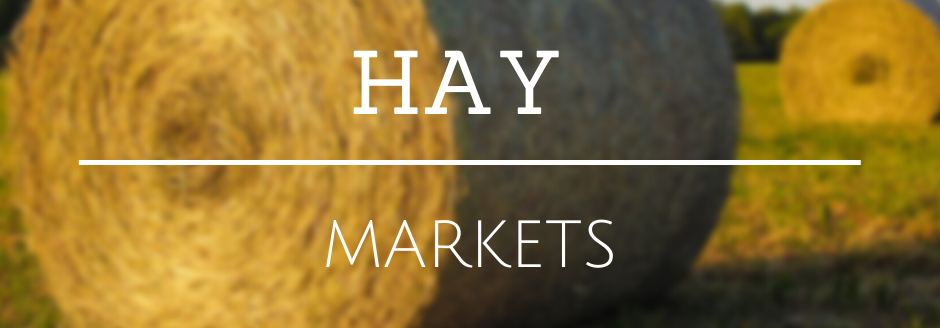State-By-State Hay Summary

Colorado—In the Feb. 22 report, compared to the last report, trade activity light on moderate demand. Retail and stable hay sold steady.
Missouri—In the Feb. 22 report, compared to last report, the supply of hay is light to moderate, demand is moderate, and prices for high quality hay steady to firm mid to lower quality hay steady to weak. Although grass turn out is still a ways away there are some early sprigs of grass showing up especially in the southern part of the state. Warmer weather has some people looking to unload some extra hay now and the average to lower quality hay has backed off from the higher prices seen earlier in the feeding season. Given the high cost of hay and the general lower supplies most farmers are glad for what appears to be an early spring.
Nebraska—In the Feb. 22 report, compared to last report, bales of alfalfa and grass hay sold steady to mostly weak. Ground and delivered hay and cornstalks $15 lower. Alfalfa pellets traded steady. Demand was very light. Most hay contacts stated they have had more calls of producers wanting to sell hay than people wanting to buy hay. Mostly open winter, very warm, dry weather late in February has let cattle graze out on cover crops, stalks or winter pastures with limited supplementation. Quite a lot of alfalfa, grass hay, cornstalks, cane and other secondary feed sitting around the state. Roughly 90 days to first cutting of alfalfa for the kickoff of the 2024 haying season, of course depending on what curveball Mother Nature might throw. Few, contacts have thought about selling some corn silage as they have excess of that forage source.
Oklahoma—In the Feb. 16 report, compared to the last report, the demand remains low and most of our hay producers are still not trading much hay and only delivering to long-time customers. Next report will be released March 1.
Texas—In the Feb. 23 report, compared to last report, hay prices are mostly steady. Trading activity was moderate on limited to moderate demand. First cutting of hay in the south will usually be marketed by the end of March or First of April. Next report will be released March 8.
South Dakota—In the Feb. 23 report, compared to last report, alfalfa hay steady to weak. Moderate demand for dairy quality alfalfa as low milk prices are pressuring margins for dairy operators causing them to cut cost where they can. Good demand for grass hay and for corn stalks. Much above normal temps again this week, this is greatly helping livestock operators to stretch their feed supplies as cows can graze winter pastures and crop residue.
New Mexico—In the Nov. 24, 2023 report, compared to last report, alfalfa hay steady. Trade active, demand good. The the state is 73% complete with fifth cutting, 54% with sixth cutting. Most parts of the state are wrapping up harvest for the season. According to New Mexico Crop Progress report as of Nov. 12, 2023. Hay and roughage supplies improved slightly from the previous week but remained in worse condition than prior years. Hay and roughage supplies were observed to be 25% very short, 42% short, 30% adequate, and 3% surplus. At 14% very short, 37% short, 45% adequate, and 4% surplus, stock water supplies were on par with the 5-year average. This is the last report for the season, reports will resume in spring 2024.
Wyoming—In the Feb. 22 report, compared to last report, hay sales sold steady to weak. Demand remains light. Some producers are thinking they will have to lower their asking prices to finish cleaning out their hay barns before first cutting of alfalfa hits the sheds in June. All types and qualities of hay left at most producers piles.
Montana—In the Feb. 23 report, compared to last report, hay sold fully steady. Hay sales were light again this week. Supplies of utility and fair quality hay remain very high as most of first and second cutting was either very mature or rained on by the time it was put up. High test hay is in very short supply and buyers continue to search for high test hay, particularly for dairy use. The upper end of feeding quality hay has seen some improvement in demand as dairies are buying hay with relative feed values as low as 155 for dairy usage due to the shortage of high test hay. Some buying was seen by ranchers in dry areas as many are concerned with both mountain snowpack and the lack of moisture around the state. The best demand for feeder quality (utility and fair) hay remains around $150/ton delivered. Demand for straw is light as heavy straw supplies continue to be seen especially in the northern portion of the state. Single load sales continue to move at steady money from time to time, however many producers have lowered asking prices in an attempt to move volume as supplies remain high.

